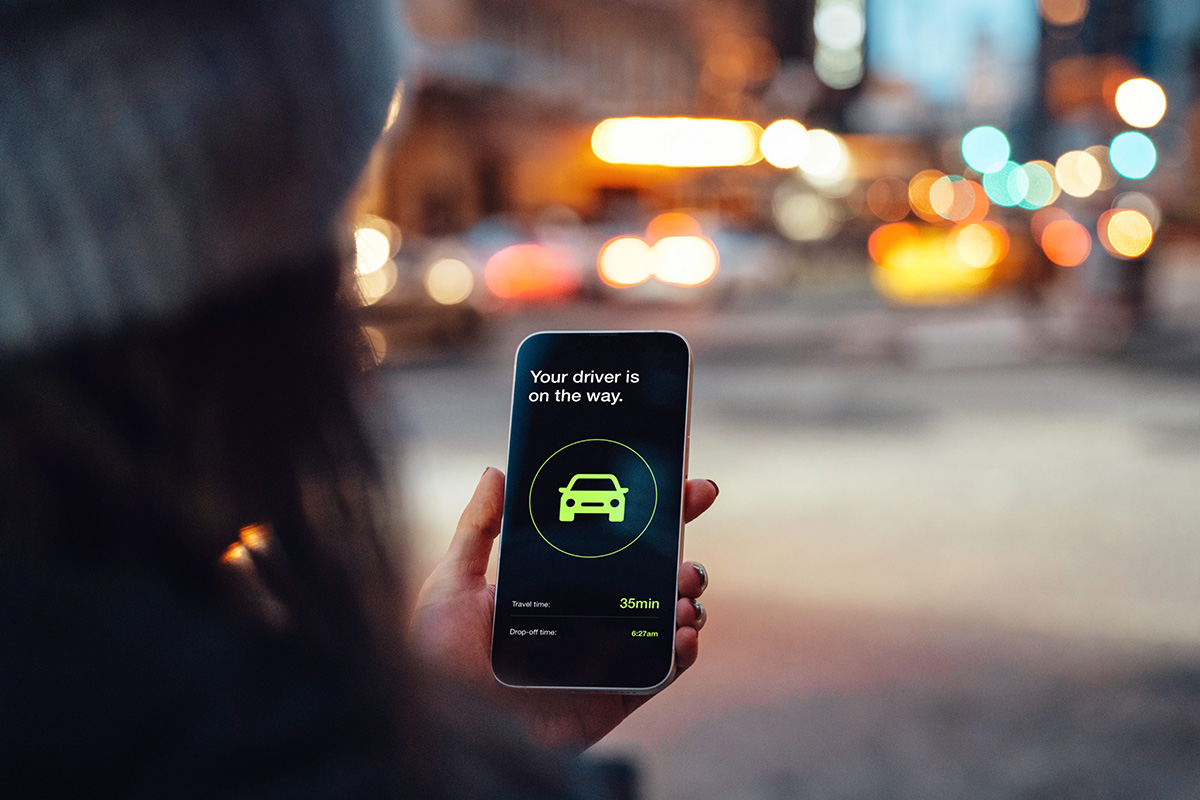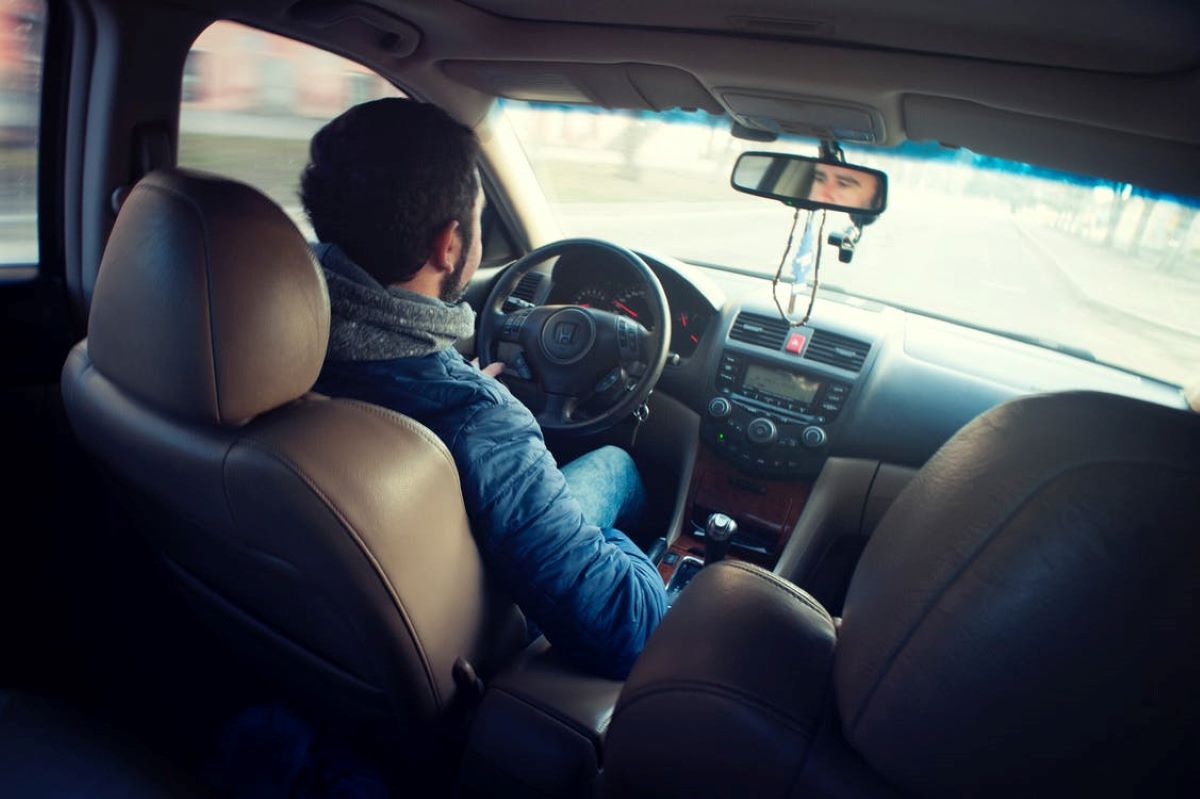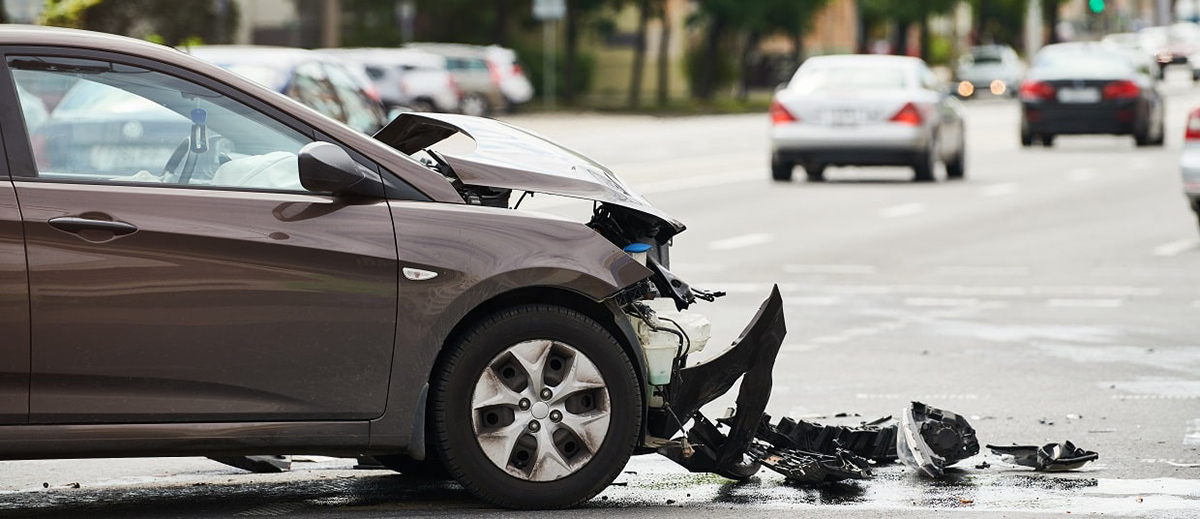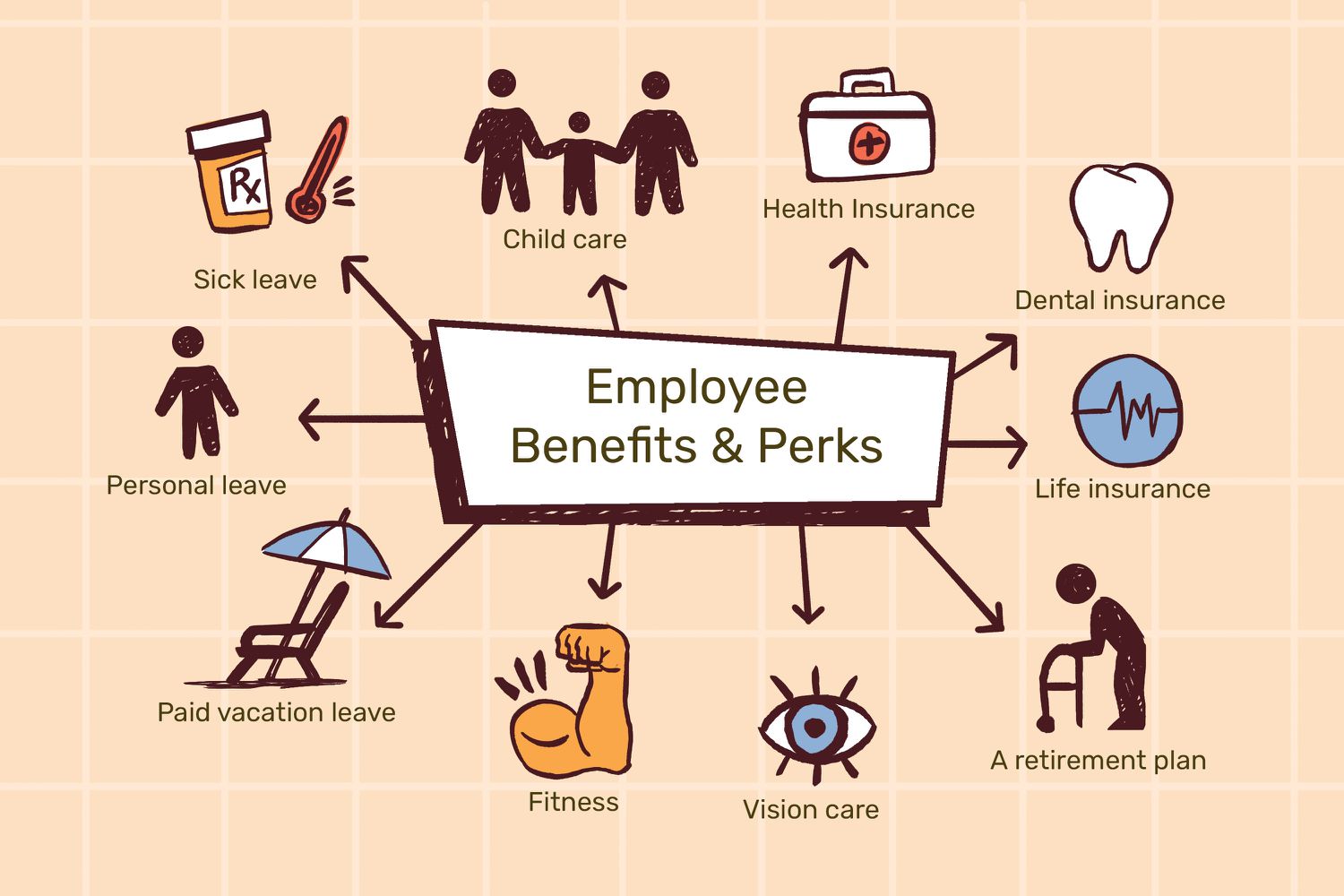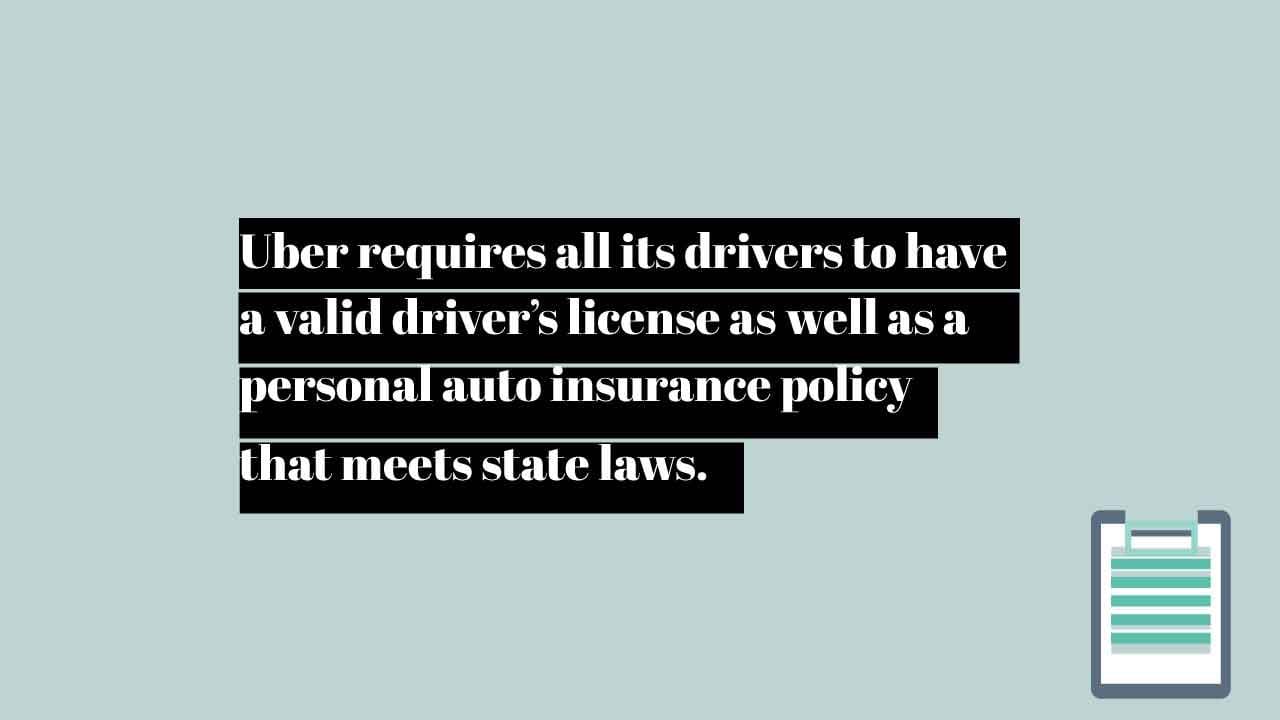

Finance
What Are The Insurance Requirements For Uber?
Published: November 19, 2023
Learn about the finance-related insurance requirements for Uber drivers to ensure you meet the necessary coverage to protect yourself and your passengers. Find out more now!
(Many of the links in this article redirect to a specific reviewed product. Your purchase of these products through affiliate links helps to generate commission for LiveWell, at no extra cost. Learn more)
Table of Contents
- Introduction
- Insurance Coverage for Uber Drivers
- Uber’s Commercial Insurance Policy
- Period 1: App On, No Passenger
- Period 2: En Route to Pick Up a Passenger
- Period 3: Passenger in Vehicle
- Rideshare Insurance Options for Uber Drivers
- Personal Auto Insurance and Ridesharing
- Commercial Auto Insurance for Uber Drivers
- State-Specific Insurance Requirements for Uber
- Conclusion
Introduction
Welcome to the world of ridesharing! With the rise of companies like Uber, more and more people are embracing the flexibility and convenience of being an Uber driver. Whether you’re looking to earn some extra cash or make ridesharing your full-time gig, it’s important to understand the insurance requirements that come along with being an Uber driver.
As a rideshare platform, Uber provides insurance coverage for its drivers during certain periods of their driving activities. However, it’s crucial to note that the level of coverage depends on the specific phase of the trip. Understanding these different periods and the associated insurance requirements is essential to ensure you’re adequately protected on the road.
In this article, we will explore the insurance coverage provided by Uber, as well as additional insurance options that can help fill any potential gaps in coverage. We’ll also discuss state-specific requirements, as regulations regarding insurance for rideshare drivers can vary.
Before we dive into the details, it’s important to understand that Uber operates on a three-phase system:
- Period 1: App On, No Passenger
- Period 2: En Route to Pick Up a Passenger
- Period 3: Passenger in Vehicle
Each period has its own insurance coverage requirements, so let’s take a closer look at what’s involved.
Insurance Coverage for Uber Drivers
When you’re driving for Uber, it’s important to understand the insurance coverage that is provided by the company. Uber has a commercial insurance policy that covers its drivers during specific periods of their driving activities.
Period 1: App On, No Passenger
During this period, when you have the Uber app turned on and are waiting for a ride request, Uber provides some liability coverage. However, this coverage is usually limited and may not be sufficient in the event of an accident. It’s important to check with your local regulations and consider additional insurance options to ensure you have adequate coverage during this period.
Period 2: En Route to Pick Up a Passenger
Once you accept a ride request and are en route to pick up a passenger, Uber provides a higher level of coverage. This includes liability coverage for bodily injury and property damage to third parties, as well as uninsured/underinsured motorist coverage. This coverage extends until the passenger enters your vehicle.
Period 3: Passenger in Vehicle
Once the passenger is in your vehicle, Uber’s insurance coverage is at its highest level. This includes liability coverage for bodily injury and property damage to third parties, as well as coverage for injuries to you and your passenger.
While Uber does provide insurance coverage during these periods, it’s important to note that there may still be gaps in coverage, especially when it comes to damage to your own vehicle or injuries to yourself.
Let’s explore some additional insurance options that can help fill these potential gaps and provide you with the peace of mind you need while driving for Uber.
Uber’s Commercial Insurance Policy
Uber provides a commercial insurance policy that covers its drivers during certain periods of their driving activities. This policy is designed to protect both the driver and the passengers in the event of an accident or other covered incident.
Period 1: App On, No Passenger
During this period, when drivers have the Uber app turned on but do not have a passenger in the vehicle, Uber provides contingent liability coverage. This coverage kicks in if the driver’s personal auto insurance does not provide coverage or if the coverage limits are insufficient. The contingent liability coverage includes up to $50,000 in bodily injury per person, up to $100,000 in bodily injury per accident, and up to $25,000 in property damage.
Period 2: En Route to Pick Up a Passenger
Once a driver accepts a ride request and is en route to pick up a passenger, Uber’s commercial insurance policy provides primary liability coverage. This coverage includes up to $1 million in liability coverage for bodily injury and property damage to third parties. It also includes uninsured/underinsured motorist coverage, which provides protection if the at-fault party in an accident is uninsured or underinsured.
Period 3: Passenger in Vehicle
When a passenger is in the vehicle, Uber’s commercial insurance policy also provides up to $1 million in liability coverage for bodily injury and property damage. In addition, this period includes coverage for injuries to the driver and the passenger caused by an uninsured/underinsured motorist.
It’s important to note that while Uber’s commercial insurance policy provides coverage during these periods, there may still be gaps in coverage, especially when it comes to damage to the driver’s own vehicle or injuries to the driver that are not caused by another party.
In the next sections, we’ll explore additional insurance options that can help fill these gaps and provide drivers with more comprehensive coverage while driving for Uber.
Period 1: App On, No Passenger
During the first period of the Uber trip, which is when the driver has the app turned on but does not have a passenger in the vehicle, there is some insurance coverage provided. However, it is important to note that this coverage is contingent and may have limitations.
Uber provides contingent liability coverage during this period, meaning it only applies if the driver’s personal auto insurance does not provide coverage or if the coverage limits are insufficient. The coverage includes up to $50,000 in bodily injury per person, up to $100,000 in bodily injury per accident, and up to $25,000 in property damage.
While this coverage may seem sufficient, it is crucial to consider the potential gaps. Many personal auto insurance policies do not cover commercial activities such as ridesharing. Additionally, the coverage limits provided by Uber’s contingent liability coverage may not be adequate in the event of a serious accident.
To address these gaps, it is recommended for Uber drivers to consider additional insurance options. One option is rideshare insurance, which is specifically designed to fill the coverage gaps during the period when the app is on but no passenger is in the vehicle.
Rideshare insurance is a specialized insurance policy that covers drivers during their ridesharing activities. This type of insurance typically extends the driver’s personal auto insurance to provide coverage during the period when they are waiting for a ride request. This helps ensure that drivers have continuous coverage throughout their entire driving experience with Uber.
It is important for Uber drivers to check with their insurance providers to see if rideshare insurance is available in their area. Rideshare insurance policies vary by state, so it is essential to understand the specific coverage and requirements in your location.
By obtaining rideshare insurance, Uber drivers can have peace of mind knowing that they have comprehensive coverage during the first period of their Uber trips when the app is on but no passenger is in the vehicle.
Period 2: En Route to Pick Up a Passenger
During the second period of an Uber trip, which is when the driver has accepted a ride request and is en route to pick up a passenger, Uber provides a higher level of insurance coverage compared to the first period.
Uber’s commercial insurance policy kicks in during this period and provides primary liability coverage. This coverage includes up to $1 million in liability coverage for bodily injury and property damage to third parties. In addition to liability coverage, Uber’s insurance policy also includes uninsured/underinsured motorist coverage.
The primary liability coverage protects the driver if they are found responsible for causing an accident that results in bodily injury or property damage to another party. This coverage extends from the moment the driver accepts the ride request until the passenger enters the vehicle.
Uninsured/underinsured motorist coverage, on the other hand, provides protection if the at-fault party in an accident is uninsured or underinsured and unable to cover the damages. This coverage ensures that the driver and their passengers are still protected even if the responsible party lacks sufficient insurance coverage.
While Uber’s insurance policy provides substantial coverage during this period, it’s important to understand that there may still be gaps in coverage. For example, damage to the driver’s own vehicle or personal injuries not caused by another party may not be covered.
To address these potential gaps, Uber drivers may want to explore additional insurance options. It’s essential to consult with insurance providers and consider individual needs when making decisions about additional coverage.
Some drivers may find that their personal auto insurance policies offer rideshare endorsements or add-ons that provide the necessary coverage during this second period. Rideshare endorsements extend the driver’s personal auto insurance to cover the period when they are en route to pick up a passenger.
If rideshare endorsements are not available or viable options, another alternative is to consider obtaining commercial auto insurance. Commercial auto insurance policies are specifically designed for drivers engaged in commercial activities, such as ridesharing. These policies provide comprehensive coverage for both liability and physical damage to the vehicle.
Remember to check with your insurance provider and explore various options to ensure you have the appropriate coverage during the second period of your Uber trips.
Period 3: Passenger in Vehicle
Once the passenger is in the vehicle, Uber’s insurance coverage reaches its highest level during the third period of an Uber trip. This period begins when the passenger enters the vehicle and extends until the end of the ride.
Uber’s commercial insurance policy provides up to $1 million in liability coverage for bodily injury and property damage. This coverage protects the driver in case they are responsible for causing an accident that results in injuries or damage to third parties.
In addition to liability coverage, Uber’s insurance policy also includes coverage for injuries to the driver and the passenger caused by an uninsured/underinsured motorist. This ensures that both the driver and the passenger are protected in case the at-fault party in an accident does not have sufficient insurance coverage.
During this period, Uber’s insurance coverage is comprehensive and offers significant protection to both the driver and the passenger. However, it’s important to note that there may still be certain excluded events or limitations in the policy, so it’s crucial to review the details of the coverage provided.
While Uber’s insurance policy provides robust coverage during this period, it’s worth considering additional insurance options to further protect yourself and your passengers.
For example, some drivers may choose to obtain personal injury protection (PIP) coverage, which provides coverage for medical expenses and other related costs in the event of injuries sustained by the driver or the passenger. This coverage can help alleviate the financial burden in case of an accident.
Furthermore, drivers may want to consider comprehensive coverage or collision coverage for their vehicles. Uber’s commercial insurance policy primarily covers liability and may not include coverage for physical damage to the driver’s vehicle. By adding comprehensive or collision coverage to their personal auto insurance policy, drivers can ensure they have protection in case their vehicle is damaged in an accident.
It’s important to consult with insurance providers and explore various coverage options to determine the best level of protection during the third period of Uber trips. By considering additional insurance options, drivers can enhance their overall coverage and have peace of mind knowing they are adequately protected.
Rideshare Insurance Options for Uber Drivers
While Uber provides insurance coverage for its drivers during certain periods of their trips, there may still be gaps in coverage. To address these gaps and ensure comprehensive protection, Uber drivers have the option to obtain rideshare insurance.
Rideshare insurance is a specialized type of insurance designed specifically for rideshare drivers. It fills the coverage gaps that may exist during the periods when the driver is using the Uber app but does not have a passenger in the vehicle.
Rideshare insurance typically extends the driver’s personal auto insurance policy to cover their ridesharing activities. This means that the driver is covered not only during personal use but also during the periods when the app is on and waiting for a ride request.
By having rideshare insurance, Uber drivers can have continuous coverage and protection during their entire driving experience, providing an added layer of security and peace of mind.
It’s important to note that rideshare insurance options may vary depending on the state. Some insurance companies offer specific rideshare endorsements or add-ons to existing personal auto insurance policies. These endorsements are designed to bridge the coverage gaps during the periods when the driver is waiting for a ride request.
Alternatively, drivers can also explore commercial auto insurance policies. These policies are specifically tailored for individuals engaged in commercial activities, such as ridesharing. Commercial auto insurance policies provide coverage for both liability and physical damage to the vehicle, ensuring comprehensive protection.
When considering rideshare insurance options, it’s crucial for Uber drivers to evaluate their individual needs and preferences. Factors to consider include the level of coverage provided, deductibles, premiums, and any additional benefits offered by the insurance provider.
It’s recommended to consult with insurance providers who specialize in rideshare coverage and discuss the specific requirements and regulations in their state. Insurance agents can provide guidance on the available options and help drivers select the most suitable rideshare insurance policy to meet their needs and ensure they have the necessary coverage as an Uber driver.
By investing in rideshare insurance, Uber drivers can have greater peace of mind knowing that they have complete coverage throughout their Uber journey, protecting themselves, their passengers, and their vehicles.
Personal Auto Insurance and Ridesharing
For drivers who participate in ridesharing services like Uber, it’s important to understand the relationship between personal auto insurance and the coverage provided by rideshare companies.
Personal auto insurance is the insurance policy that most individuals have to cover their personal vehicles. However, it’s essential to note that personal auto insurance typically does not provide coverage for commercial activities or ridesharing.
In the context of ridesharing, personal auto insurance policies often have exclusions that specifically state they do not cover any accidents or incidents that occur while the driver is engaged in ridesharing activities. This means that if you are involved in an accident while driving for Uber, your personal auto insurance may deny coverage for damages or injuries.
This is where rideshare insurance comes into play. Rideshare insurance is designed to fill the coverage gaps left by personal auto insurance during ridesharing activities. It extends the coverage of the driver’s personal auto insurance policy to provide protection during the periods when the app is on but there is no passenger in the vehicle.
Having rideshare insurance is crucial for Uber drivers to ensure they have continuous coverage and protection throughout their ridesharing journey. It helps protect both the driver and the passengers in the event of an accident or other covered incidents.
It’s important for Uber drivers to communicate with their insurance provider and inquire about rideshare insurance options. Some insurance companies offer specific rideshare endorsements or add-ons that can be added to the driver’s personal auto insurance policy to provide coverage during the ridesharing periods.
When obtaining rideshare insurance, drivers need to consider the level of coverage provided, the policy limits, deductibles, and any additional benefits that the insurance policy offers. It’s essential to review the policy terms and discuss any questions or concerns with the insurance provider to ensure a clear understanding of the coverage.
By having adequate rideshare insurance, Uber drivers can have peace of mind knowing that they have comprehensive coverage that protects them and their passengers during their ridesharing activities. It’s a vital component of being a responsible and protected rideshare partner.
Commercial Auto Insurance for Uber Drivers
For Uber drivers, especially those who drive full-time or have multiple passengers, obtaining commercial auto insurance is an important consideration. Commercial auto insurance is specifically designed to provide coverage for vehicles used for commercial purposes, such as ridesharing.
While Uber provides insurance coverage for its drivers during certain periods of their trips, there may still be gaps in coverage. Commercial auto insurance fills these gaps and provides comprehensive coverage for both liability and physical damage to the vehicle.
One of the advantages of commercial auto insurance is that it covers the full spectrum of an Uber driver’s activities, including the periods when the app is on and waiting for a ride request, as well as the periods when the driver is en route to pick up passengers or has passengers in the vehicle.
Commercial auto insurance typically offers higher liability limits than personal auto insurance, providing more extensive protection in the event of an accident. This is crucial for rideshare drivers who are responsible for the safety of their passengers and third parties on the road.
In addition to liability coverage, commercial auto insurance also covers physical damage to the vehicle. This includes collision coverage, which protects against damage from accidents, and comprehensive coverage, which covers damage from incidents such as theft, vandalism, or weather-related events.
It’s important to note that commercial auto insurance for Uber drivers may have higher premiums compared to personal auto insurance due to the increased risk associated with commercial activities. However, the additional coverage and peace of mind it provides can outweigh the cost for drivers who rely on ridesharing as their primary source of income.
When considering commercial auto insurance, it’s advisable to consult with insurance providers who specialize in rideshare coverage and understand the specific requirements and regulations in your state. They can provide guidance on the available options and help you choose the most suitable commercial auto insurance policy that meets your needs and complies with local regulations.
By obtaining commercial auto insurance, Uber drivers can ensure they have comprehensive coverage that protects them, their passengers, and their vehicles during their ridesharing activities. It’s a proactive step towards being fully protected and minimizing potential financial risks.
State-Specific Insurance Requirements for Uber
Insurance requirements for Uber drivers can vary from state to state, as regulations regarding ridesharing and insurance coverage differ across jurisdictions. It’s important for Uber drivers to familiarize themselves with the specific insurance requirements in their respective states to ensure compliance and adequate coverage.
Many states have enacted legislation that outlines the insurance obligations for rideshare companies like Uber. These laws typically require rideshare drivers to maintain certain levels of insurance coverage during the different periods of their trips.
For example, some states may require Uber drivers to carry additional liability coverage during Period 1 (app on, no passenger) compared to what is provided by Uber’s contingent liability coverage. This is to ensure that drivers have sufficient coverage while waiting for a ride request.
In other states, there may be specific laws regarding uninsured/underinsured motorist coverage, which ensures that drivers and passengers are protected if they are involved in an accident with an uninsured or underinsured driver.
It’s important for Uber drivers to review their personal auto insurance policies and understand if there are any exclusions or limitations related to ridesharing activities. In some states, drivers may be required to obtain rideshare endorsements or add-ons to their existing personal auto insurance policies to ensure coverage during the ridesharing periods.
Additionally, certain states may have specific requirements for commercial coverage. This means that Uber drivers may be required to obtain commercial auto insurance policies that are specifically designed for vehicles used for commercial purposes.
To determine the state-specific insurance requirements for Uber drivers, it’s recommended to consult with insurance providers who are knowledgeable about ridesharing regulations in your state. They can guide you through the insurance options available and help you select the right coverage that complies with local requirements.
By understanding and meeting the state-specific insurance requirements, Uber drivers can ensure they are operating within the law and have the necessary insurance coverage to protect themselves, their passengers, and third parties in the event of an accident.
Conclusion
Being an Uber driver offers flexibility and the opportunity to earn income on your own terms. However, it’s crucial to understand the insurance requirements that come along with the ridesharing gig. While Uber provides insurance coverage during specific periods of your trips, it’s important to recognize that there may still be gaps in coverage.
During Period 1, when the app is on but no passenger is in the vehicle, Uber’s contingent liability coverage may have limitations. To address these potential gaps, rideshare insurance is a recommended option. Rideshare insurance extends the coverage of your personal auto insurance to cover the waiting period, ensuring you have continuous protection.
During Period 2, when you’re en route to pick up a passenger, Uber’s commercial insurance policy provides primary liability coverage. However, additional coverage options like rideshare endorsements or commercial auto insurance can provide added protection for both liability and physical damage to your vehicle.
During Period 3, when a passenger is in your vehicle, Uber’s commercial insurance policy offers substantial liability coverage. However, considering additional coverage options like personal injury protection and comprehensive/collision coverage can further protect you and your passengers.
State-specific insurance requirements for Uber drivers may vary, so it’s essential to understand the regulations in your area. Consulting with insurance providers who specialize in rideshare coverage will help you navigate the specific requirements and ensure compliance.
In conclusion, as an Uber driver, it’s crucial to have a comprehensive understanding of the insurance coverage provided by Uber and to explore additional insurance options that can fill any potential gaps. Rideshare insurance, rideshare endorsements, or commercial auto insurance are all viable options to consider, depending on your needs and the requirements in your state.
By prioritizing insurance coverage, you can drive with confidence knowing that you’re adequately protected in case of an accident or other covered incidents. Remember, insurance is not just a legal requirement but also a valuable safety net for your financial and personal well-being.
